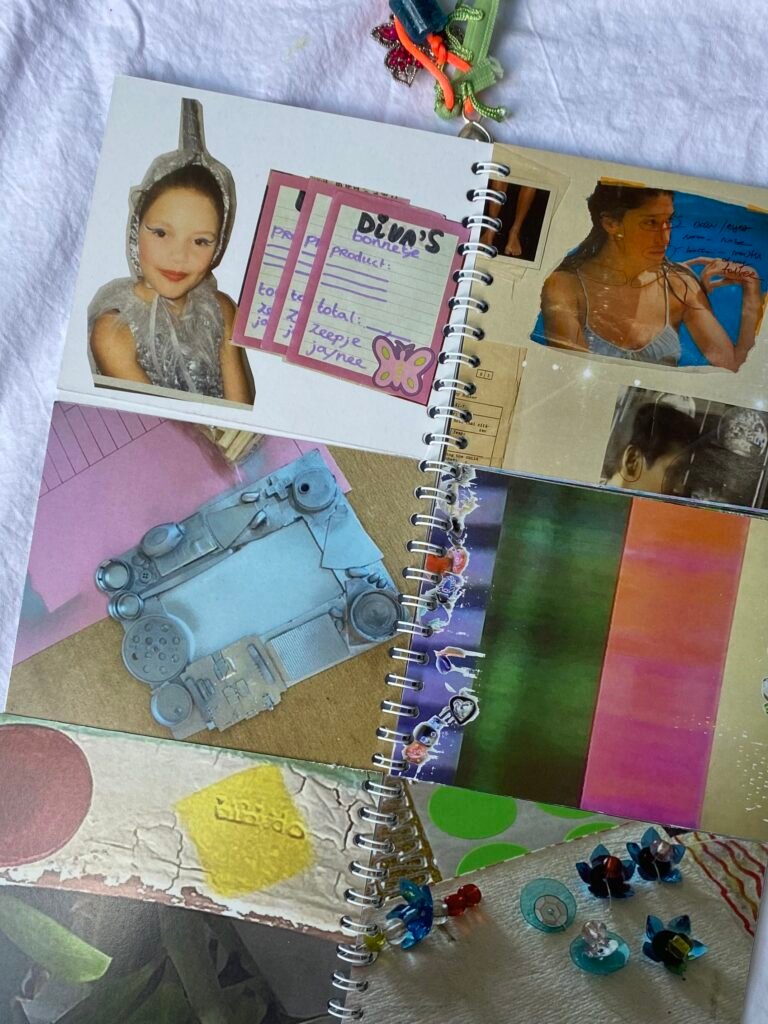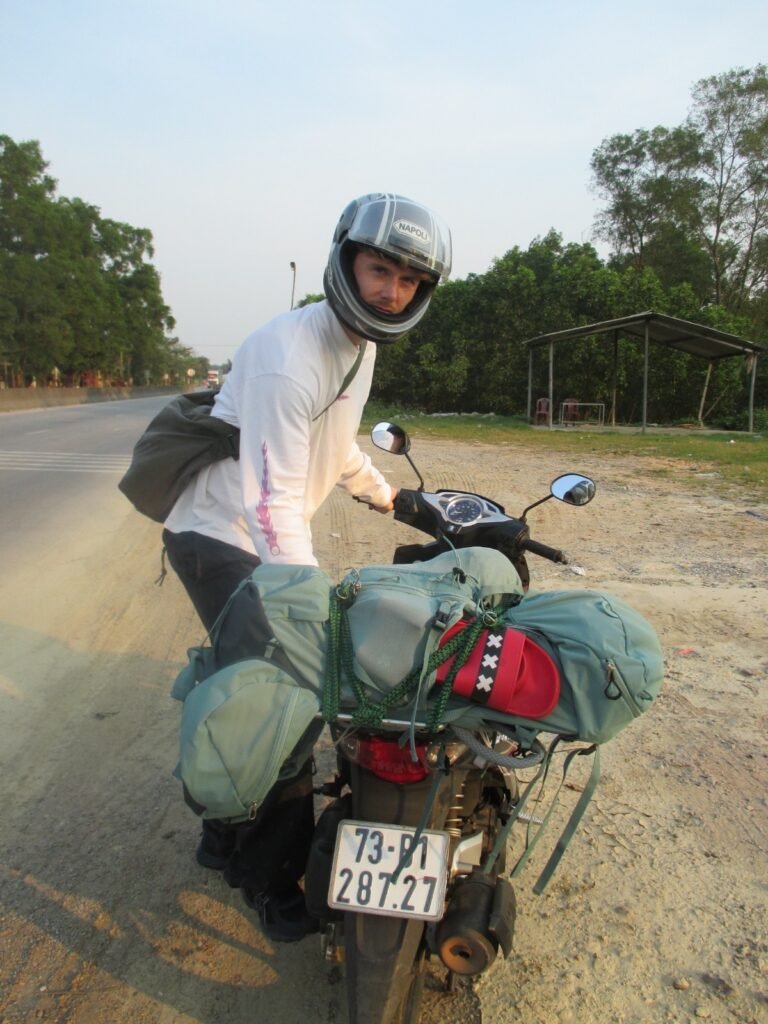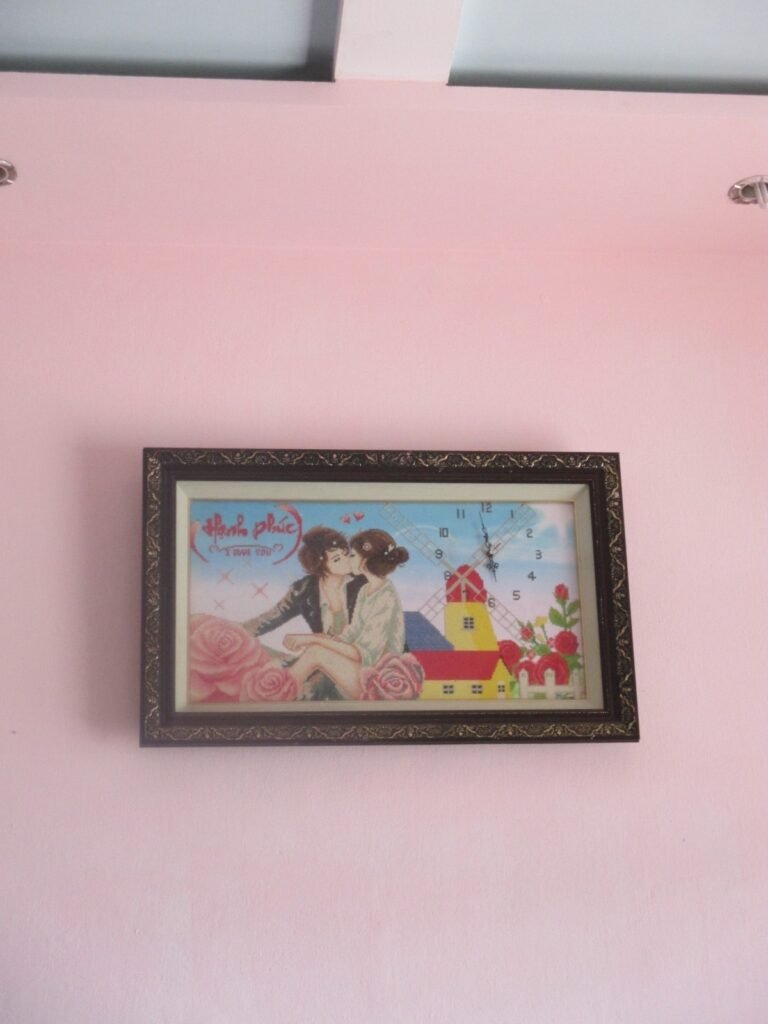Dear readers,
The first time I came across DREAM UNIT was by pure coincidence, as I stumbled upon their store in the heart of Amsterdam this spring. It felt like its own magical universe, tucked away from the outside world. Intrigued, I wanted to know more about the creative minds behind this unique concept, which led me to Evy and Teun – a couple in their early 20s who turned their shared vision into reality.
The name DREAM UNIT was born on a trip to Seoul, inspired by a magazine story of a character navigating the balance between physical and digital worlds. This idea resonated with Evy and Teun, who sought to create their own ‘memory unit’ – a space to capture real-life experiences. For Evy, who has been expressing her creativity since childhood, DREAM UNIT became the outlet for her artistic vision. As I learned more, I couldn’t help but wonder how Evy navigates both real-world and online landscapes amid rapidly shifting trends in fashion?
Below you will find snippets of my conversation with Evy, where she shares insights of creative processes behind DREAM UNIT, her take on online culture, trend cycles, and much more.
Yours truly,
Chiara
Cover Visual: Anastasia Gviniachvili


Chiara: What are the three essentials that you always carry in your bag?
Evy: Oh, my journal! I always bring it with me, along with a smaller notebook. This is where I write down all my concepts and ideas. I just really like to write it down because otherwise, I forget them. I also have my etui with stickers and, of course, my phone.
C: Can you tell me more about the inspiration behind the name ‘Dream Unit’? How did the story from that Seoul magazine influence your vision for the store?
E: The inspiration for the name came when Teun, my friend and co-owner of Dream Unit, and I were travelling from Vietnam to Japan. During this trip we barely spent any time on our phones, which helped us find new ideas. It felt great to get inspired without being influenced by people in Amsterdam or trends on social media.
When we got to Seoul, I bought this magazine about a character that was stuck between the real world and the online world. The story resonated with me because I often struggle with the balance between the two. I really like the internet and what it can offer, but I also appreciate doing things my own way – in real life and in an analog way, if that makes sense.
The magazine talked about how, in today’s world, taking pictures is proof that something actually happened—your phone becomes your ‘memory unit’. Teun and I were inspired by this and thought, ‘What if we could create a new memory unit, one that’s more tangible, about real-life experiences?’ That’s how we came up with the idea for Dream Unit.


C: You’ve already touched on this before, but we live in a world where the digital and physical worlds are increasingly intertwined. How does Dream Unit position itself within this context?
E: In the beginning, we avoided being too active on Instagram. I wanted the right people to find us naturally rather than by aggressively promoting ourselves. And I think we still try to maintain this today. But the reality is, if you want to grow and support the designers we feature, you need to be visible. So we’ve found a way to promote our items without being ‘in-your-face’ about it.
C: More authentic, in a way?
E: Exactly. It’s about our story and the people around us rather than just selling items, but of course, we need to keep the company running. We are making an effort to exist in physical spaces, not just online. In the past we have done some editorials for Instagram, but we’re now working on creating a physical magazine as well. We really try to make everything we do feel tangible.
C: Do you have close relationships with the designers you feature, and how do those connections influence the curation of the store?
E: For sure! We’ve met a lot of designers while travelling, and many of those based in the Netherlands come to our events, collaborate, and become friends. That also makes it more authentic and cool in a way because it feels like more than just selling products. It’s about creating a space where we, Teun and I, the designers, and everyone that stops by can grow – and I think that might be even cooler than what we sell.
C: Do these relationships also influence your vision for Dream Unit?
E: Of course, I get influenced by their work, but the core of my vision has been in my mind for a long time. For instance, when I was around 10 years old, I had this small ‘shop’ where I sold handmade keychains to all the teachers and some of my friends’ moms. I recently found the receipts that I wrote back then, and it is literally the child’s version of what we do now – even the style is pretty similar. So, I think my vision was always there; I just needed the right outlet.


C: In today’s world, trends come and go very quickly. How does your team navigate these cycles, especially with your focus on handcrafted, smaller-batch items?
E: We’re not really trend-driven. Each designer has their own style. Maybe the designers are influenced by trends, but we don’t actively seek out what’s ‘cool’ at the moment. Trends feel more like a specific feeling or moment in time that builds up. It’s not something we consciously follow, but I might be more influenced by them than I think.
C: What is your definition or understanding of a ‘trend’?
E: So, it’s always a cycle right? (Evy pauses, thinks deeply) Trends build up and then have a peak, and are constantly changing. So I believe it’s really about change. What is your definition of a trend?
C: I believe it’s a moment for people to come together and celebrate a shared interest in fashion for instance. Initially, everyone enjoys the same styles, and conformity while creating a sense of community. However, as more people jump on the trend, it peaks and starts to decline. People want to feel unique while still being part of a community, but if the community gets too large, it might feel like their uniqueness is being taken away.
E: Yes I agree! It’s interesting to see how, when one trend fades out in one community, another picks it up. It really is a cycle. I also find it fascinating how you can sense them coming, and then suddenly they’re everywhere.
C: In online culture, there’s a mentality of ‘If you didn’t take a picture, it didn’t happen.’ Similarly, there’s a pressure to participate in trends to feel relevant. How does Dream Unit challenge or respond to it?
E: That’s definitely something we struggle with. Teun, who is more on the business side of things, really pushes for us to be present on TikTok and social media, but I’m not a fan. I understand that it helps us grow, but it’s not something I love doing and struggle to be very consistent with. I also dislike that posting on social media feels like a necessity nowadays – in a perfect world I wouldn’t be doing it. So I try to find different approaches to make it more fun for myself. Recently, a friend recommended that I treat our content as if it were a magazine spread – which makes it more fun for me, though it’s still a work in progress.


C: Do you think personal style is still possible today?
E: Yes I think it is, but it’s hard to avoid being influenced by trends, especially if you’re online or surrounded by people who are. You really can’t live in a city, be young, and not be influenced by trends. I’m really into colourful neon glasses and those Party Rock Anthem vibes at the moment. I’ve been looking at that aesthetic a lot lately, though it’s more about the visual language for me than actually buying into that specific style – so I believe I’m still staying true to my own personal style.
C: What is your biggest dream?
E: I have a lot (giggles), but I think what I’d really love is to live and work in Japan. (Evy pauses, thinking quietly) This is such a hard question! But what really matters to me is getting underrated artists and their work more attention, bringing them to the forefront where they can be appreciated – that would be a dream..








